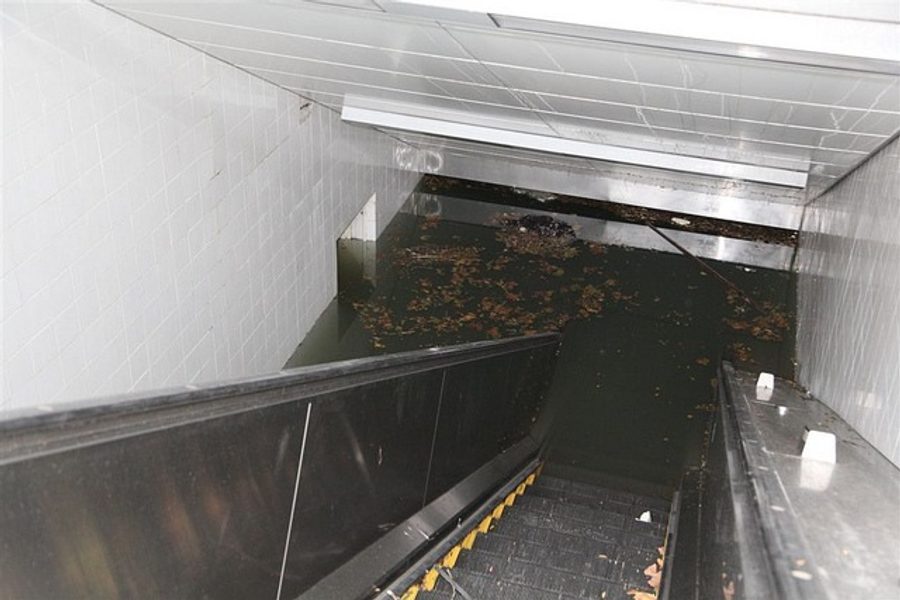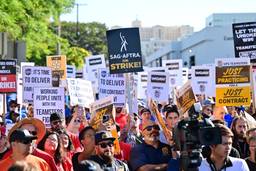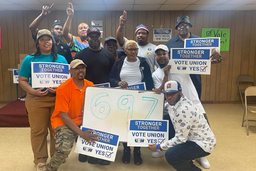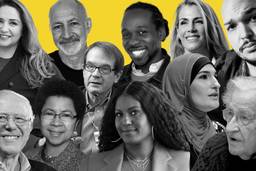
The shock of Sandy is still rippling across the northeastern United States. But in the microcosm of New York City, we can already see who’s going to bear the brunt of the damage. As Hurricane Katrina demonstrated, floodwaters have a way of exposing the race and class divisions that stratify our cities.
Though some bus and subway service is returning, many neighborhoods dependent on public transportation remain functionally shuttered. Not surprisingly, recent surveys show that Metropolitan Transit Authority ridership consists mostly of people of color, nearly half living on less than $50,000 a year in one of the world’s most expensive cities.
It’s true that Sandy’s path of destruction was to some extent an equal opportunity assault, pummeling the trendiest downtown enclaves and blighted neighborhoods alike. But residents’ levels of resilience to the storm – the capacity to absorb trauma – will likely follow the sharp peaks and valleys of the city’s economic landscape.
Even before the storm, inequities arose in the city’s disaster preparations. Many public-housing residents who stayed behind in evacuation zones were preemptively blacked out, left without elevators, heat or hot water. Meanwhile, once again, in a repeat of Hurricane Irene, the city was criticized for shamelessly denying the incarcerated at Rikers Island an adequate evacuation plan.
Now, floodwaters have ravaged the Lower East Side–a historical bastion of immigant social movements and a dense community of low-income people of color, mostly of Latino and Asian descent. Hundreds have taken shelter at a local school, community service organizations are struggling to stabilize neighborhoods, and some Chinatown activists have reported ugly run-ins with the police during their relief efforts.
Endemic social tensions may intensify as households and communities across lower Manhattan and the outer boroughs face both a transportation shutdown and large-scale displacement: public schools closed, battered storefronts practically abandoned. Many struggling residents will be depending on emergency food rations. In outlying areas such as Far Rockaway, seniors and people with disabilities are especially endangered by power outages combined with physical isolation. In old neighborhoods such as the historic Coney Island district, workers and local small businesses are further hobbled by a lack of insurance.
Now commuter routes are gradually coming back online, but not fast enough to meet the needs of those New Yorkers who can least afford to miss a day of work. The Transportation Equity Atlas of the Pratt Center for Community Development clearly maps out just how long and contorted commutes can be for the poor and people of color:
Three-quarters of a million New Yorkers travel more than one hour each way to work, and two-thirds of them earn less than $35,000 a year. By contrast, just 6 percent of these extreme commuters earn more than $75,000 a year. Black New Yorkers have the longest commute times, 25 percent longer than white commuters; Hispanic commuters have rides 12 percent longer.
In addition, as the Pratt Center’s director of policy, Joan Byron, told Working In These Times via email, the economic impact of the transit shutdown will be “more severe on low- and moderate-income workers, who have fewer options for taking time off or flexing their workplace and schedules.” Some might lose income because their workplaces are closed, and others could face the burden of “having to find childcare if your workplace is open but your kids’ school is closed.”
Yves Smith at Naked Capitalism notes that across the five boroughs, which span an “income disparity as high as China,” the hardest-hit workers belong to the forgotten ranks of “the janitors, the cooks and delivery men, the people who run newsstands and dry cleaners and cobblers and food carts” and the health care workers who respond to day-to-day emergencies. The most neglected survivors will presumably be those who lack insurance, those living paycheck to paycheck, those without the legal know-how and social supports needed to navigate systems of disaster relief.
Sandy’s uneven impact isn’t isolated to the United States; in Cuba, the Dominican Republic and Haiti, the destruction was especially acute in areas with deeper poverty and weaker infrastructure. Globally, the disaster highlights the irony that the poorest typically contribute far less to environmental damage than the elite, but face the worst environmental burdens (though they also manage in some places to respond and resist through innovative grassroots environmental initiatives).
But even within supposedly prosperous U.S. cities, natural disasters compound manufactured inequality. The aid effort following another disaster in New York, the September 11 attacks, was undermined by the government’s profound disconnect from the poor. A report by the Urban Justice Center found that after 9/11 hit local communities with huge job losses, “the main problem with disaster aid was not that too many individuals and families sought aid; to the contrary, despite potential eligibility, many economic victims we interviewed did not seek and were not receiving disaster aid at all.” In other words, entrenched economic and bureaucratic barriers ushered in a second wave of trauma for immigrants and the poor.
There’s one potential ray of light in the aftermath of Sandy: a wake-up call for a massive public investments to beef up the city’s defenses against climate change. A strong transit system is integral to an environmentally sustainable urban grid. And a targeted overhaul of New York’s creaky bus and subway lines could deliver equity to low-income neighborhoods in two ways: greater access to good jobs in other areas, and investment in decent local transit and construction jobs that help make neighborhoods more economically and ecologically resilient. Veronica Vanterpool of the Tri-State Transportation Campaign, which advocates for equitable regional transit policies, tells In These Times that transit is sometimes glossed over in the debates about creating so-called green jobs in both building and operating mass transit systems. In fact, she said, “transit equity does encompass… increased opportunity to these [job] fields that traditionally have not been marketed to these marginalized communities.”
In the immediate aftermath, however, recovery work – from restoring electricity to rebuilding homes – will be grueling, hazardous and handled by unions that often come under political and economic siege. As Jamilah King points out at Colorlines.com, workers in the city’s transit union, long a bulwark of black and Latino labor (and of militant public-sector organizing) will lead the repair of a city whose politicians have been steadily eroding their working conditions and benefits.
New York will survive Sandy, but so will the city’s persistent inequalities and environmental precarity. So when the electricity comes back on, working people should understand that before the next crisis hits, they need to leverage the devastation to generate new political and economic power.
Michelle Chen is a contributing writer at In These Times and The Nation, a contributing editor at Dissent and a co-producer of the “Belabored” podcast. She studies history at the CUNY Graduate Center. She tweets at @meeshellchen.








